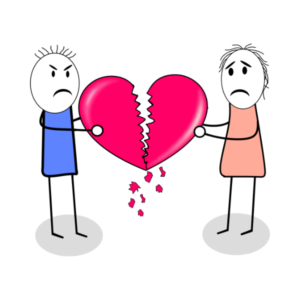Love can be complex, and sometimes what feels like love may actually be rooted in unhealthy patterns. A trauma bond, also known as a toxic bond, occurs when intense emotional experiences—often stemming from trauma or dysfunction—create a strong yet unhealthy attachment between individuals. It’s essential to distinguish between genuine love and a trauma bond to prioritize emotional well-being and foster healthier relationships. Here are eight signs to watch out for:
- Intensity Amid Turbulence: The relationship feels extremely intense, but this intensity is often accompanied by frequent emotional highs and lows, creating a rollercoaster of emotions.
- Cycle of Hurt and Reconciliation: There’s a recurring pattern of conflict, hurtful behavior, followed by reconciliation or promises to change. This cycle may give a temporary sense of relief or closeness but perpetuates underlying issues.
- Emotional Dependency: One or both partners feel emotionally dependent on each other for validation, self-worth, or stability. This dependency can lead to a fear of separation or abandonment.
- Unhealthy Power Dynamics: There’s an imbalance of power or control in the relationship, where one partner may exert dominance or manipulation over the other. This can manifest as coercive behaviors or emotional manipulation.
- Difficulty Setting Boundaries: Boundaries are blurred or disregarded, making it challenging to maintain individual autonomy or personal space within the relationship.
- Isolation from Support Networks: One or both partners may feel isolated from friends, family, or support networks due to the dynamics of the relationship. This isolation can reinforce the bond while diminishing outside perspectives.
- Repeat Patterns from Past Relationships: There’s a pattern of repeating similar dynamics or conflicts from past relationships, indicating unresolved emotional issues that contribute to the trauma bond.
- Feeling Stuck or Trapped: Despite recognizing the relationship’s negative impact, individuals may struggle to leave or envision a future without their partner, feeling trapped in the cycle of dysfunction.
Key Takeaway:
Recognizing signs of a trauma bond is crucial for prioritizing emotional health and well-being. Genuine love involves mutual respect, trust, and growth, whereas a trauma bond thrives on unhealthy attachment and unresolved emotional wounds. Seeking support from trusted friends, family, or a therapist can provide clarity and guidance in navigating these complex dynamics toward healthier relationships.




